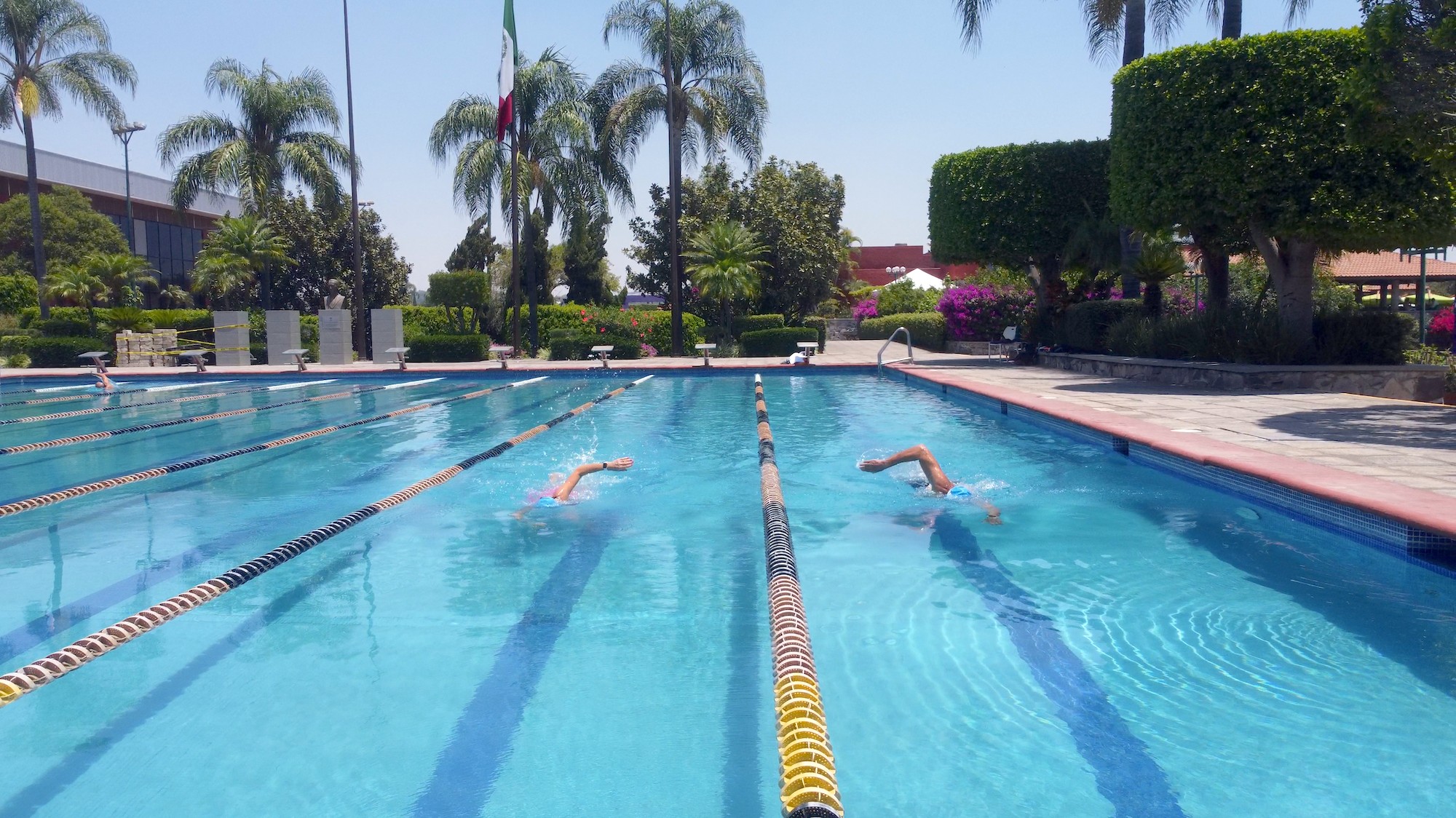How Dense Is Water Compared To Air? This is a fundamental question in physics and has significant implications in various fields, from swimming to meteorology. COMPARE.EDU.VN provides a comprehensive analysis, offering clarity for students, consumers, and professionals alike. Understanding the density contrast, buoyancy principles, and atmospheric influences are crucial for making informed decisions and grasping related scientific concepts. Discover comparative densities and fluid dynamics on our platform now.
1. Understanding Density: The Basics
Density, at its core, is a measure of how much “stuff” is packed into a given space. It’s a fundamental property of matter that dictates how substances interact, float, sink, and behave under different conditions. Comprehending density is crucial for various applications, from engineering to cooking.
1.1. Defining Density: Mass and Volume
Density is formally defined as the ratio of mass to volume. The formula is simple:
Density (ρ) = Mass (m) / Volume (V)
- Mass (m): Represents the amount of matter in an object, usually measured in kilograms (kg) or grams (g).
- Volume (V): Represents the amount of space an object occupies, usually measured in cubic meters (m³) or liters (L).
The resulting unit for density is typically kilograms per cubic meter (kg/m³) or grams per milliliter (g/mL).
1.2. Units of Measurement
Depending on the context and scale, density can be expressed in different units:
- Kilograms per cubic meter (kg/m³): The standard SI unit, often used for large-scale applications.
- Grams per milliliter (g/mL): Commonly used in chemistry and biology due to the convenient relationship between volume and mass for water-based solutions. Note that 1 g/mL is equal to 1 g/cm³.
- Pounds per cubic foot (lb/ft³): Used in the imperial system, common in the United States.
1.3. Factors Affecting Density
Several factors can influence the density of a substance:
- Temperature: Generally, as temperature increases, density decreases because substances expand. However, water is an exception within a certain temperature range (0°C to 4°C).
- Pressure: Increasing pressure generally increases density by compressing the substance into a smaller volume. This effect is more pronounced in gases.
- Composition: Adding different substances can change the density of a mixture. For example, dissolving salt in water increases the water’s density.
1.4. Why Does Density Matter?
Density plays a critical role in numerous phenomena:
- Buoyancy: Whether an object floats or sinks depends on its density relative to the surrounding fluid.
- Convection: Differences in density due to temperature variations drive convection currents in fluids, important in weather patterns and ocean currents.
- Material Selection: Engineers consider density when choosing materials for construction, aerospace, and other applications to optimize strength and weight.
- Fluid Dynamics: Density affects how fluids flow, impacting the design of pipelines, aircraft, and ships.
2. Density of Air: Composition and Variability
Air, often perceived as light and weightless, does possess density. Understanding air density requires considering its composition and how various factors influence it.
2.1. Composition of Air
Dry air is primarily composed of:
- Nitrogen (N₂): Approximately 78%
- Oxygen (O₂): Approximately 21%
- Argon (Ar): Approximately 0.9%
- Other gases: Trace amounts of carbon dioxide (CO₂), neon (Ne), helium (He), and other gases.
However, the density of moist air is different. The presence of water vapor (H₂O) affects air density because water vapor has a lower molar mass than dry air.
2.2. Standard Air Density
At sea level, under standard temperature and pressure (STP) conditions (0°C or 273.15 K and 1 atmosphere), the density of dry air is approximately:
1.225 kg/m³
This value serves as a reference point but can vary significantly depending on environmental conditions.
2.3. Factors Affecting Air Density
Several factors cause air density to fluctuate:
- Temperature: As temperature increases, air expands, and its density decreases. This inverse relationship is described by the ideal gas law.
- Pressure: As pressure increases, air is compressed, and its density increases proportionally. This is why air density is higher at lower altitudes where atmospheric pressure is greater.
- Humidity: Surprisingly, increasing humidity decreases air density. This is because water vapor (H₂O) is lighter than the nitrogen and oxygen molecules that make up the bulk of dry air. Replacing some of the heavier molecules with lighter water vapor molecules reduces the overall density of the air.
- Altitude: As altitude increases, atmospheric pressure decreases, leading to lower air density. This is why airplanes need to generate lift at higher speeds at higher altitudes.
2.4. Significance of Air Density
Air density plays a crucial role in:
- Aviation: Aircraft lift and drag are directly affected by air density. Pilots must consider air density when calculating takeoff and landing speeds, especially at high-altitude airports or on hot days.
- Meteorology: Air density gradients drive weather patterns and influence atmospheric stability.
- Combustion: Air density affects the efficiency of combustion processes in engines and power plants.
- Sports: Air density influences the performance of athletes in sports such as cycling, running, and baseball. Lower air density at high altitudes can result in faster times and longer distances.
3. Density of Water: Purity and Conditions
Water, a ubiquitous substance essential for life, exhibits a density that varies based on its purity and environmental conditions.
3.1. Density of Pure Water
The density of pure water at 4°C (39.2°F) is approximately:
1000 kg/m³ or 1 g/mL
This is its maximum density. At temperatures above and below 4°C, the density of water decreases.
3.2. Factors Affecting Water Density
Several factors influence water density:
- Temperature: Water is unique because its density increases as it cools from its boiling point down to 4°C. Below 4°C, the density decreases as it approaches its freezing point (0°C). This is why ice is less dense than liquid water and floats.
- Salinity: Dissolved salts increase water density. Seawater is denser than freshwater due to its salt content. The higher the salinity, the greater the density.
- Pressure: Increasing pressure increases water density, but this effect is less significant than temperature or salinity changes.
- Dissolved Substances: Other dissolved substances besides salt, such as minerals and organic matter, can also affect water density.
3.3. Density Variations in Natural Water Bodies
The density of water in natural environments varies:
- Freshwater: Density is primarily affected by temperature. Lakes and rivers often exhibit thermal stratification, with warmer, less dense water near the surface and colder, denser water at the bottom.
- Seawater: Density is affected by both temperature and salinity. Ocean currents are driven by density differences arising from variations in temperature (thermo-) and salinity (-haline), a phenomenon known as thermohaline circulation.
- Brackish Water: Found in estuaries where freshwater mixes with seawater, brackish water exhibits a range of densities depending on the mixing ratio.
3.4. Importance of Water Density
Water density influences:
- Aquatic Life: Density stratification affects nutrient distribution, oxygen levels, and the distribution of aquatic organisms.
- Ocean Currents: Density differences drive large-scale ocean currents that redistribute heat around the globe.
- Weather Patterns: Ocean temperatures and currents influence weather patterns and climate.
- Industrial Processes: Water density is a critical parameter in various industrial processes, such as desalination and wastewater treatment.
4. How Dense is Water Compared to Air?: Quantitative Analysis
To accurately assess how dense water is compared to air, we must consider specific conditions. The ratio can vary, but the fundamental principle remains: water is significantly denser than air.
4.1. Baseline Comparison
Under standard conditions:
- Density of water (at 4°C): 1000 kg/m³ (1 g/mL)
- Density of air (at 15°C, sea level): 1.225 kg/m³ (0.001225 g/mL)
Therefore, water is approximately 816 times denser than air.
Calculation:
1000 kg/m³ / 1.225 kg/m³ ≈ 816.33
This baseline comparison highlights the substantial density difference between the two substances under typical conditions.
4.2. Impact of Temperature
Temperature changes affect the density ratio:
- Warmer Water: At higher temperatures (e.g., 25°C), the density of water decreases slightly to around 997 kg/m³. The ratio becomes slightly larger, approximately 813.8.
- Colder Air: At lower temperatures, air density increases. For example, at -20°C, air density is around 1.39 kg/m³. The ratio decreases slightly to around 719.4.
These adjustments illustrate that temperature variations influence the precise density ratio.
4.3. Impact of Altitude
Altitude significantly affects air density. Consider the following scenarios:
- High Altitude (e.g., 2000 meters): Air density decreases to approximately 1.0065 kg/m³. The density ratio increases to approximately 993.5.
- Extremely High Altitude (e.g., Mt. Everest): Air density plummets to around 0.4 kg/m³. The density ratio increases dramatically to approximately 2500.
Altitude plays a critical role in amplifying the density difference.
4.4. Impact of Salinity
Salinity increases water density. For example:
- Seawater: The density of seawater is around 1025 kg/m³. The ratio decreases slightly to approximately 836.7.
- Dead Sea: With extremely high salinity, water density can reach 1240 kg/m³. The ratio decreases to approximately 1012.2.
Salinity has a more modest impact compared to temperature and altitude.
4.5. Comparative Table
Here’s a comparative table summarizing the varying density ratios under different conditions:
| Condition | Water Density (kg/m³) | Air Density (kg/m³) | Density Ratio (Water/Air) |
|---|---|---|---|
| Standard Conditions | 1000 | 1.225 | 816.33 |
| Warm Water (25°C) | 997 | 1.225 | 813.80 |
| Cold Air (-20°C) | 1000 | 1.39 | 719.40 |
| High Altitude (2000m) | 1000 | 1.0065 | 993.50 |
| Mt. Everest | 1000 | 0.4 | 2500.00 |
| Seawater | 1025 | 1.225 | 836.70 |
| Dead Sea | 1240 | 1.225 | 1012.20 |



This table provides a clear quantitative comparison under different conditions, illustrating the variability in the density ratio.
5. Practical Implications and Applications
Understanding the density difference between water and air has numerous practical implications across various fields.
5.1. Swimming and Aquatic Sports
In swimming, the high density of water compared to air presents both challenges and opportunities. Swimmers must overcome greater resistance (drag) due to water’s density, but also benefit from greater buoyancy.
- Technique: Efficient swimming techniques minimize drag by streamlining the body and reducing the cross-sectional area presented to the water. This involves proper body position, rotation, and stroke mechanics.
- Buoyancy Aids: Wetsuits and other buoyancy aids increase buoyancy, reducing the effort required to stay afloat and improving swimming speed, especially in open water swimming.
- Training: Swimmers train to increase their strength and endurance to propel themselves through the denser water effectively.
5.2. Marine Engineering and Naval Architecture
The design of ships and other marine vessels is heavily influenced by water density:
- Buoyancy: Ships are designed to displace an amount of water equal to their weight, ensuring they float. The density of the water affects how much volume must be displaced.
- Stability: The distribution of weight and the shape of the hull are designed to ensure stability in the water, considering the density and dynamic forces of the water.
- Drag Reduction: Hull designs are optimized to minimize drag and improve fuel efficiency, accounting for the density of the water.
5.3. Aviation and Aerospace
Air density is a critical factor in aviation:
- Lift: Aircraft wings generate lift by creating a pressure difference between the upper and lower surfaces. The amount of lift generated depends on air density, airspeed, and wing shape.
- Drag: Air density also affects drag, which opposes the motion of the aircraft. Higher air density increases drag, requiring more power to maintain speed.
- Engine Performance: Air density affects the performance of aircraft engines. Lower air density at high altitudes reduces engine power.
5.4. Meteorology and Climate Science
Density differences in air and water drive many weather and climate phenomena:
- Atmospheric Circulation: Density differences due to temperature variations drive atmospheric circulation patterns, such as winds and jet streams.
- Ocean Currents: Density differences due to temperature and salinity variations drive ocean currents, which redistribute heat around the globe.
- Convection: Convection occurs when warmer, less dense air or water rises, while cooler, denser air or water sinks. This process plays a critical role in cloud formation, thunderstorms, and ocean mixing.
5.5. Industrial Applications
Water density is important in various industrial processes:
- Desalination: Density differences are used in some desalination processes to separate freshwater from saltwater.
- Wastewater Treatment: Density differences can be used to separate solids from liquids in wastewater treatment plants.
- Chemical Processing: Density is a critical parameter in many chemical processes, affecting reaction rates and product yields.
6. Advanced Concepts: Buoyancy and Fluid Dynamics
Delving deeper into the relationship between water and air density requires understanding the principles of buoyancy and fluid dynamics.
6.1. Buoyancy: Archimedes’ Principle
Buoyancy is the upward force exerted by a fluid that opposes the weight of an immersed object. Archimedes’ principle states that the buoyant force is equal to the weight of the fluid displaced by the object.
Buoyant Force (F_b) = Volume of displaced fluid (V) Density of fluid (ρ) Acceleration due to gravity (g)
- If the buoyant force is greater than the weight of the object, the object floats.
- If the buoyant force is less than the weight of the object, the object sinks.
- If the buoyant force is equal to the weight of the object, the object is neutrally buoyant.
The density difference between water and air explains why objects that sink in air can float in water.
6.2. Fluid Dynamics: Viscosity and Drag
Fluid dynamics is the study of how fluids (liquids and gases) move. Key concepts include:
- Viscosity: A measure of a fluid’s resistance to flow. Water has a relatively low viscosity compared to honey or oil, but it is still much more viscous than air.
- Drag: The force that opposes the motion of an object through a fluid. Drag depends on the density of the fluid, the shape and size of the object, and the object’s speed. Drag is significantly higher in water than in air due to water’s higher density and viscosity.
6.3. Reynolds Number
The Reynolds number (Re) is a dimensionless quantity that characterizes the flow regime of a fluid. It is defined as:
Re = (Density (ρ) Velocity (v) Length (L)) / Viscosity (μ)
- Low Reynolds numbers indicate laminar flow, where the fluid flows smoothly in parallel layers.
- High Reynolds numbers indicate turbulent flow, where the fluid flows chaotically with eddies and vortices.
The density difference between water and air affects the Reynolds number, influencing the transition from laminar to turbulent flow around objects moving through these fluids.
6.4. Bernoulli’s Principle
Bernoulli’s principle states that as the speed of a fluid increases, the pressure within the fluid decreases. This principle is crucial for understanding lift generation in aircraft wings and the behavior of fluids in pipelines and other applications.
The density of the fluid influences the pressure changes associated with changes in speed, affecting the performance of these systems.
7. Case Studies and Real-World Examples
Examining specific case studies and real-world examples further illustrates the importance of understanding the density difference between water and air.
7.1. Swimming Records at High Altitude
Swimmers often achieve faster times at high-altitude locations due to the lower air density:
- Reduced Drag: Lower air density reduces drag, allowing swimmers to move through the air more easily during starts and turns.
- Physiological Effects: Altitude training can also improve aerobic capacity, benefiting swimmers in endurance events.
However, the effect is more pronounced in events with significant air resistance components.
7.2. Design of Hydrofoils and Aerofoils
Hydrofoils are underwater wings used to lift boats out of the water, reducing drag and increasing speed. Aerofoils are wings used in aircraft to generate lift.
- Density Considerations: The design of hydrofoils and aerofoils must account for the density of the fluid they operate in (water or air) to optimize lift and minimize drag.
- Shape Optimization: The shape of the foil is designed to create a pressure difference that generates lift, taking into account the fluid’s density and viscosity.
7.3. Atmospheric Rivers and Flooding
Atmospheric rivers are narrow bands of concentrated water vapor in the atmosphere that can transport large amounts of water over long distances.
- Density and Precipitation: When atmospheric rivers encounter mountains, the air is forced to rise and cool, causing the water vapor to condense and produce heavy precipitation.
- Flooding Risk: The density of the water vapor and the amount of precipitation that falls can lead to significant flooding, especially in areas with steep terrain.
7.4. Deep-Sea Exploration
Exploring the deep sea requires specialized equipment and techniques due to the extreme pressure and density of the water:
- Submersibles: Submersibles are designed to withstand the immense pressure at great depths and must be neutrally buoyant to allow for controlled movement.
- Buoyancy Control: Ballast tanks are used to adjust the buoyancy of the submersible by adding or removing water.
- Density Considerations: The density of the seawater at different depths must be considered when designing and operating submersibles.
8. Addressing Common Misconceptions
Several misconceptions exist regarding the density of water and air. Addressing these misunderstandings is crucial for a clear understanding of the topic.
8.1. Misconception: Air Has No Weight
Fact: Air has weight because it is composed of molecules that have mass. The weight of air is what creates atmospheric pressure.
8.2. Misconception: Water Always Sinks in Air
Fact: Water can exist in the air as water vapor, which is less dense than dry air under the same conditions. This is why humidity reduces air density.
8.3. Misconception: Density Is Constant
Fact: Density is not constant and varies depending on factors such as temperature, pressure, salinity, and composition.
8.4. Misconception: Only Solids Have Density
Fact: Liquids and gases also have density, defined as mass per unit volume. Density is a property of all matter.
8.5. Misconception: Warm Water is Always Denser Than Cold Water
Fact: This is only true above 4°C. Below 4°C, water behaves anomalously, and cold water is less dense than water at 4°C.
9. Future Research and Applications
Future research and applications related to the density of water and air include:
9.1. Climate Modeling
Improving climate models requires a better understanding of the density-driven processes in the atmosphere and oceans.
- Ocean Circulation: Accurately modeling ocean circulation patterns requires precise data on water temperature, salinity, and density.
- Atmospheric Processes: Understanding how density differences drive atmospheric circulation is crucial for predicting weather patterns and climate change.
9.2. Advanced Materials
Developing new materials with specific density properties is important for various applications:
- Lightweight Materials: Developing lightweight materials for aerospace and automotive applications can improve fuel efficiency and performance.
- Buoyancy Control: Creating materials with controllable buoyancy is important for underwater robotics and exploration.
9.3. Renewable Energy
Density-driven processes can be harnessed for renewable energy generation:
- Ocean Thermal Energy Conversion (OTEC): OTEC uses the temperature difference between warm surface water and cold deep water to generate electricity.
- Salinity Gradient Power: Salinity gradient power harnesses the energy released when freshwater mixes with saltwater.
9.4. Environmental Monitoring
Monitoring water and air density is important for environmental protection:
- Pollution Detection: Density measurements can be used to detect pollution in water and air.
- Water Quality Monitoring: Monitoring water density can provide insights into water quality and ecosystem health.
10. Frequently Asked Questions (FAQ)
Q1: Why is water denser than air?
A: Water molecules are more tightly packed than air molecules due to stronger intermolecular forces (hydrogen bonding), resulting in greater mass per unit volume.
Q2: Does temperature always decrease density?
A: Generally, yes, but water behaves differently between 0°C and 4°C, where density increases as temperature rises.
Q3: How does salinity affect water density?
A: Increased salinity increases water density as dissolved salts add mass to the solution.
Q4: Why is air density important for airplanes?
A: Air density directly impacts lift and drag. Lower air density requires higher speeds to generate sufficient lift.
Q5: What is Archimedes’ principle?
A: Archimedes’ principle states that the buoyant force on an object is equal to the weight of the fluid it displaces.
Q6: How does humidity affect air density?
A: Higher humidity decreases air density because water vapor is lighter than the nitrogen and oxygen in dry air.
Q7: What is viscosity?
A: Viscosity is a measure of a fluid’s resistance to flow.
Q8: What is the Reynolds number?
A: The Reynolds number is a dimensionless quantity that characterizes the flow regime of a fluid (laminar or turbulent).
Q9: How does altitude affect air density?
A: Air density decreases with increasing altitude due to lower atmospheric pressure.
Q10: What are some practical applications of understanding density differences?
A: Applications include swimming, marine engineering, aviation, meteorology, and industrial processes.
Conclusion: Understanding Density for Informed Decisions
Understanding “how dense is water compared to air” is more than just a scientific curiosity; it’s crucial for numerous real-world applications. From optimizing swimming techniques to designing efficient aircraft and predicting weather patterns, density plays a pivotal role. COMPARE.EDU.VN is dedicated to providing comprehensive, accessible, and reliable comparisons to empower you to make informed decisions. Whether you’re a student, professional, or simply curious, we hope this deep dive has enhanced your understanding.
Ready to explore more comparisons? Visit compare.edu.vn today to discover detailed analyses and make the best choices for your needs. Our resources are designed to simplify complex information and help you navigate the world with confidence. Contact us at 333 Comparison Plaza, Choice City, CA 90210, United States. Whatsapp: +1 (626) 555-9090.
